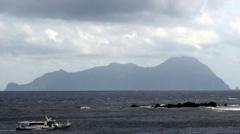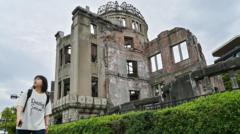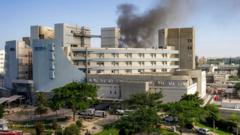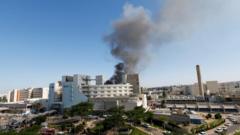Tremors have raised concerns among the small populations of the Tokara Islands, as emergency services face challenges in accessing remote locations.
Hundreds of Earthquakes Strike Japan's Tokara Islands in 11 Days

Hundreds of Earthquakes Strike Japan's Tokara Islands in 11 Days
Over 800 tremors, including a powerful 5.6 magnitude quake, have left residents restless and on alert.
Across the last two weeks, the Tokara Islands—an isolated chain located in southwestern Japan—have endured an unprecedented series of seismic activity, recording over 800 earthquakes. The latest major disturbance occurred on Wednesday, with a tremor registering at 5.6 on the Richter scale, as reported by the U.S. Geological Survey.
The Japan Meteorological Agency (JMA) confirmed that it has documented 870 earthquakes since June 21, all measuring at least 1.5 on its seismic intensity scale, indicating they were strong enough to be noticed by residents. Earthquakes above 5.0 have been known to displace furniture and pose risks for inhabitants.
This recent spike in seismic activity is notable, even in a nation accustomed to earthquakes. More than 600 individuals inhabit these islands, which were formed by underwater volcanic activity and are renowned for their natural hot springs. The JMA has yet to clarify the reasons behind this recent uptick in quakes, though such occurrences can sometimes precede the emergence of volcanic islands.
The reminder of seismic vulnerability has prompted precautionary measures. The Japanese government is known for its disaster preparedness; however, the remoteness of the Tokara Islands complicates rapid emergency response. The main island, Nakanoshima, is accessible only via a lengthy ferry ride of over six hours, or by helicopter.
Residents on Akusekijima have reported significant disruptions to their daily lives, with sleep deprivation being a common complaint since the tremors began. Thankfully, authorities have stated there is no immediate tsunami threat, although they have cautioned residents about potential dangers from falling rocks and landslides as a result of the instability.
As Japan navigates this geological anomaly, the ongoing seismic events serve as a stark reminder of the country’s dynamic earth and the need for constant vigilance.
The Japan Meteorological Agency (JMA) confirmed that it has documented 870 earthquakes since June 21, all measuring at least 1.5 on its seismic intensity scale, indicating they were strong enough to be noticed by residents. Earthquakes above 5.0 have been known to displace furniture and pose risks for inhabitants.
This recent spike in seismic activity is notable, even in a nation accustomed to earthquakes. More than 600 individuals inhabit these islands, which were formed by underwater volcanic activity and are renowned for their natural hot springs. The JMA has yet to clarify the reasons behind this recent uptick in quakes, though such occurrences can sometimes precede the emergence of volcanic islands.
The reminder of seismic vulnerability has prompted precautionary measures. The Japanese government is known for its disaster preparedness; however, the remoteness of the Tokara Islands complicates rapid emergency response. The main island, Nakanoshima, is accessible only via a lengthy ferry ride of over six hours, or by helicopter.
Residents on Akusekijima have reported significant disruptions to their daily lives, with sleep deprivation being a common complaint since the tremors began. Thankfully, authorities have stated there is no immediate tsunami threat, although they have cautioned residents about potential dangers from falling rocks and landslides as a result of the instability.
As Japan navigates this geological anomaly, the ongoing seismic events serve as a stark reminder of the country’s dynamic earth and the need for constant vigilance.




















